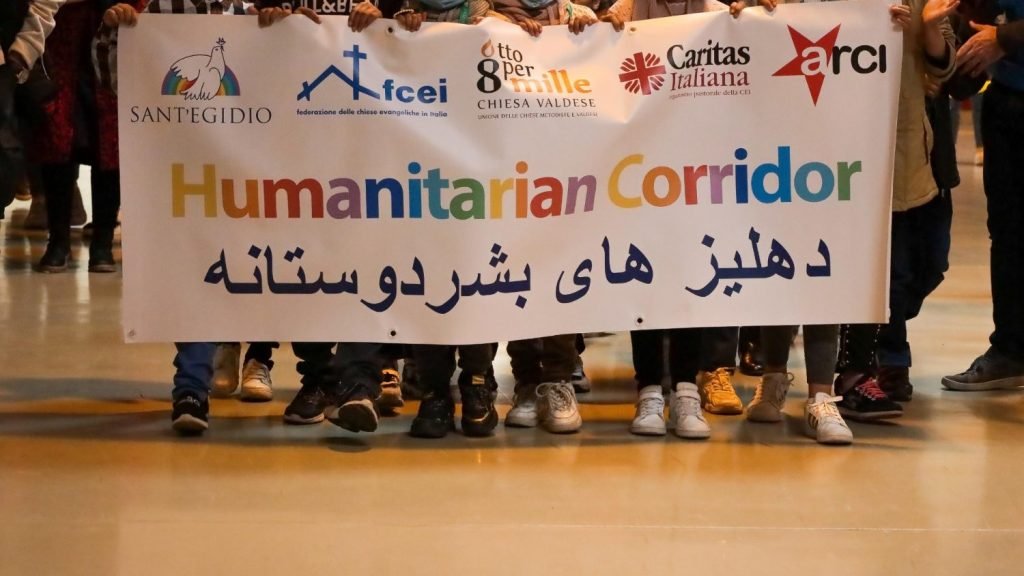By Madara Dias, MHR Program, University of Manitoba
Date: June 4, 2025
Overview of the Problem
The humanitarian crisis in Rakhine State, Myanmar, has intensified amid ongoing conflict, climate-induced disasters, and widespread food insecurity. By early 2025, the region faces a looming famine with more than 2 million people at risk. Critical infrastructure has collapsed, agricultural production has plummeted, and international access is restricted. In response, the United Nations proposed a humanitarian corridor during a March 2025 visit to Rohingya refugee camps in Bangladesh. The corridor, if implemented, would facilitate the delivery of emergency aid and potentially pave the way for the safe, voluntary, and dignified return of Rohingya refugees.
While humanitarian in its intention, the corridor proposal carries significant political and security implications. Myanmar’s ruling military junta seeks to retain control over such initiatives, while ethnic armed organizations like the Arakan Army oppose unilateral decisions. Bangladesh, the host of nearly a million Rohingya refugees, is caught between addressing a deepening humanitarian crisis and protecting its national sovereignty. Regional powers, particularly China, India, and the United States view the issue through strategic lenses, making coordination and consensus increasingly complex.
A Region in Crisis
According to the UNDP, by May 2025, food production in Rakhine will meet only 20% of the region’s needs. The crisis is not merely about logistics, but it is about survival. Over 2 million people are living in famine-like conditions, with ethnic communities including the Rohingyas among the most vulnerable. This humanitarian emergency prompted the UN to advocate for a corridor contingent on the consent of all conflict actors.
Historically, Rakhine has shared economic, cultural, and social ties with Bangladesh. The region, once home to both Rohingya and Rakhine populations long before Bamar colonization (1784–1824), reflects a complex history of integration and marginalization. The Rohingyas, often misrepresented as outsiders, have a presence in Rakhine dating back to the 4th century AD.
Geopolitical Calculations
China holds significant economic stakes in Rakhine through the China-Myanmar Economic Corridor and the upcoming Kyaukphyu Deep-Sea Port. The port, expected to open in 2025, is vital to China’s Belt and Road Initiative. Beijing is likely to support any arrangement that protects its commercial interests and avoids instability.
India views Rakhine as a critical link in its connectivity strategy, particularly through the Kaladan Multi-Modal Transit Transport Project. With the vulnerable Siliguri Corridor as its primary access route to the northeast, India engages pragmatically with whoever exercises control in Rakhine to safeguard its interests. Meanwhile, the United States supports pro-democracy actors and humanitarian operations under the Burma Act, though its long-term involvement remains uncertain amid shifting foreign policy priorities.
Bangladesh’s Dilemma
For Bangladesh, the corridor offers both risk and reward. The country must choose between two options. One is unconditional passage which is risking domestic unrest and potential tension with Myanmar. Second is complete denial the proposal by sacrificing humanitarian credibility.
But conditional passage also available as an option, which provide an opportunity for balancing aid with national interest. The most widely supported path is conditional passage, with proposals including:
- UN sponsorship and enforcement through a Security Council mandate
- Oversight by international observers to ensure aid transparency
- Negotiations with the Arakan Army and other stakeholders to link corridor logistics to Rohingya repatriation guarantees
Bangladesh’s principal objective remains the safe return of Rohingyas with citizenship. With bilateral talks with the junta yielding little, multilateral coordination is increasingly seen as essential.
Legal and Strategic Dimensions of the Corridor
A humanitarian corridor is legally defined as a demilitarized space agreed upon by conflicting parties to allow aid and civilian movement. However, implementation without inclusive negotiation may create more problems than solutions. Past models, like the Lachin Corridor, reveal both the benefits of access and the risks of manipulation.
There are concerns that Bangladesh might be drawn into broader proxy conflicts or face destabilizing refugee inflows. Officials argue that Dhaka’s role would be logistical, without crossing into Myanmar or violating sovereignty norms. Legal scholars emphasize that sovereignty includes a duty to facilitate humanitarian relief during crises. Crucially, Bangladesh must broaden its engagement beyond the junta. Inclusion of the Arakan Army and Myanmar’s National Unity Government in dialogue is key to establishing a legitimate and sustainable corridor.
Numbers That Matter
- 20%: Rakhine food production will meet only 20% of population needs by May 2025 (UNDP)
- 2+ million: People in Rakhine face famine-like conditions
- 27%: Rise in child malnutrition cases in Rohingya camps in early 2025 (UNICEF)
- 180,000: Rohingyas confirmed for repatriation (of 800,000 listed)
- $934.5 million: UN appeal in 2025 to support 1.48 million Rohingyas and host communities
- 2025: Expected launch year of Kyaukphyu Deep-Sea Port, amplifying China’s maritime presence
These figures speak volumes. Without immediate humanitarian access, deaths from starvation, disease, and displacement will climb. At the same time, the corridor may offer a pragmatic foundation for coordinated repatriation and regional stability.
The Education Breakdown: A Warning Sign
Recently, UNICEF announced the suspension of education services in Rohingya camps in Bangladesh, citing a lack of funding. This marks a dangerous tipping point. Education has been a rare lifeline for thousands of displaced children, offering stability, hope, and protection against exploitation. Its removal further entrenches despair and increases the risk of radicalization and human trafficking. For Bangladesh, this adds yet another layer of complexity which aim to host nearly a million refugees with diminishing international support. The humanitarian corridor must, therefore, be more than a conduit for food and which must be a catalyst for restoring essential rights and services, both in Rakhine and in the camps. Education must be treated as a core component of the broader peace and repatriation strategy.
Reflections
The proposed humanitarian corridor to Rakhine stands at a crossroads between opportunity and peril. For Bangladesh, it offers a chance to reclaim leadership in shaping a humane and strategic solution to the protracted Rohingya crisis, but only if approached with clarity, conditionality, and coordination.
The recent withdrawal of UNICEF’s education services in refugee camps is a stark warning. It signals a broader collapse of international commitment and underscores the urgency for Bangladesh to ensure that the corridor becomes more than just a route for emergency supplies. It must also restore essential rights, specially education for displaced populations. The absence of education services risks deepening the vulnerabilities of an already traumatized generation, leading to long-term security and social consequences both within and beyond the camps.
To mitigate these challenges and maximize the corridor’s potential, Bangladesh should:
- Condition the corridor’s implementation on multilateral oversight, ensuring that aid reaches intended populations without being co-opted by any one actor.
- Insist on inclusive dialogue, particularly involving the Arakan Army and National Unity Government, to guarantee that humanitarian access is linked to political accountability and repatriation guarantees.
- Reframe education as a humanitarian priority, both within the corridor and the camps, pushing for international funding and interim support from regional partners.
- Mobilize regional and global support to ensure sustained pressure on the Myanmar junta and international institutions to treat the crisis with the urgency it demands.
- Public awareness and debate in Bangladesh are also vital. Citizens must be informed and involved in shaping a response that balances national interest with humanitarian responsibility. In a world where crises multiply but solidarity often fades, the corridor could either symbolize a step toward regional justice—or a silent surrender to inaction.
What happens next will not only determine the fate of the corridor, but it will define the future of displaced communities and the moral leadership of Bangladesh.



